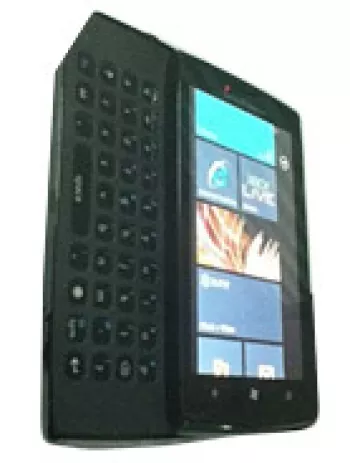Unveiling the Sony Ericsson W380 Specs Pricing Pros & Cons

Introduction to Sony Ericsson W380
The Sony Ericsson W380 was a part of the esteemed Walkman series introduced by Sony Ericsson, making its first appearance in late 2007. It carved out a niche for itself during a time when mobile phones were transitioning from basic communication devices to multimedia gadgets. The W380 distinguished itself with its dedicated music features and distinctive design, appealing to music enthusiasts and young audiences alike.
Design and Build
One of the standout features of the Sony Ericsson W380 was its unique clamshell design. Measuring 92 x 49 x 16 mm and weighing just 100 g, it was compact and quite portable. The phone's build was durable, and it came in a variety of colors including Electric Purple, Magnetic Grey, Black Champagne, and Black Orange, offering a trendy palette for style-conscious users. The clamshell format protected the screen from scratches and accidental inputs, a prevalent problem in devices with exposed screens.
Display Features
The W380 boasted a 1.9-inch TFT display with 256K colors. While the 176 x 220 pixels resolution (~148 ppi density) may seem modest by today’s standards, it was adequate for the time, especially for its primary function—playing music and basic phone operations. The screen-to-body ratio was about 25.2%, ensuring the device remained compact and easy to use with one hand.
Camera Capabilities
Equipped with a single 1.3 MP camera, the Sony Ericsson W380 could capture basic photos suitable for quick snaps and contact photo assignments. Although it lacked video recording capabilities, the camera was in line with contemporaneous devices which primarily focused on communication and multimedia playback over photography.
Music and Audio
Music was at the heart of the W380, a true hallmark of the Walkman series. It featured a robust media player capable of handling MP3 and AAC files, complemented by a loudspeaker that offered clear audio playback. However, it did not include a 3.5mm headphone jack, requiring a proprietary connector for audio accessories. The device allowed customization with downloadable ringtones and catered to music lovers with stereo FM radio and an RDS feature for added convenience.
Connectivity and Network
The W380 supported GSM technology and was compatible with 2G bands (GSM 900/1800/1900 for the W380i variant), ensuring broad network compatibility for international users. Internet connectivity was facilitated through GPRS and EDGE technologies, classified as Class 10. Additional connectivity options included Bluetooth 2.0 with A2DP for wireless audio devices, as well as USB 2.0 for data transfer and charging.
Storage and Memory
Internally, the device came with 14MB of available user memory, which was rather limited but typical for devices of that era. For those requiring additional space, the W380 included a Memory Stick Micro (M2) card slot, allowing for memory expansion up to 4 GB—a significant amount for storing music files and some basic applications while vastly enhancing its multimedia storage capabilities.
Battery Life
The device was powered by a removable Li-Ion 930 mAh battery (BST-39), which offered a commendable stand-by time of up to 300 hours and a talk time of up to 7 hours. This battery performance was fairly robust, enabling users to enjoy extended music playback without frequent recharges.
User Interface and Software
The W380 was categorized as a feature phone, operating on a proprietary OS with an intuitive menu system. It supported varied messaging formats including SMS, EMS, MMS, Email, and Instant Messaging, making it suitable for basic communication needs. Web browsing capabilities were enabled by a WAP 2.0/xHTML browser, although limited by the data speeds of the time.
Additional Features
Additional features included Java support via MIDP 2.0 for running small applications and games, which could be downloaded to augment the phone's functionality. The device also supported photo calls and a phonebook capacity of 1000 contacts with 20 additional fields per contact, ensuring comprehensive contact management.
Market Position and Impact
At release, the W380 was priced around 80 EUR, positioning it competitively within the mid-range segment of the market. Its appeal to young audiences and music enthusiasts was bolstered by its distinctive Walkman branding and music-centric features. Although discontinued, its legacy persists as an iconic model within Sony Ericsson’s illustrious lineup during the late 2000s.
Conclusion
The Sony Ericsson W380 was a representative of a transitional era in mobile communications, exemplifying the blend of basic telephony and enhanced multimedia capabilities that characterized the late 2000s. While technological advances have since dwarfed its hardware and features, the W380 remains a nostalgic reminder of the period's design aesthetics and the burgeoning role of mobile phones as comprehensive entertainment devices.
Key Features of Sony Ericsson W380
- Compact and Lightweight: Dimensions of 92 x 49 x 16 mm and weighs only 100 g.
- TFT Display: 1.9 inches with 256K colors for a vibrant viewing experience.
- Expandable Memory: Supports Memory Stick Micro (M2) up to 4 GB.
- 1.3 MP Camera: Capture moments with a single rear camera.
- Bluetooth 2.0 with A2DP: Enjoy wireless music streaming.
- Stereo FM Radio with RDS: Listen to your favorite radio stations.
- Messaging Capabilities: Supports SMS, EMS, MMS, Email, and Instant Messaging.
- Java Support: Compatible with Java MIDP 2.0 applications.
- Removable Li-Ion 930 mAh Battery: Offers up to 300 hours standby and up to 7 hours talk time.
- Available in Multiple Colors: Electric Purple, Magnetic Grey, Black Champagne, Black Orange.
Disadvantages of Sony Ericsson W380
- Lacks 3G and 4G support, limited to GSM technology.
- Small display size of only 1.9 inches with low resolution (176 x 220 pixels).
- Very limited internal storage of 14MB.
- Camera lacks video recording capability.
- No front-facing (selfie) camera.
- No WLAN support for wireless internet connectivity.
- No GPS feature available.
- Lacks 3.5mm headphone jack for standard audio connections.
- No advanced sensors or positioning technology.
- Relatively low battery capacity with only 930 mAh.


View Also
More Phones
All Rights Reserved +13924 Phones © Mobilawy 2025

























